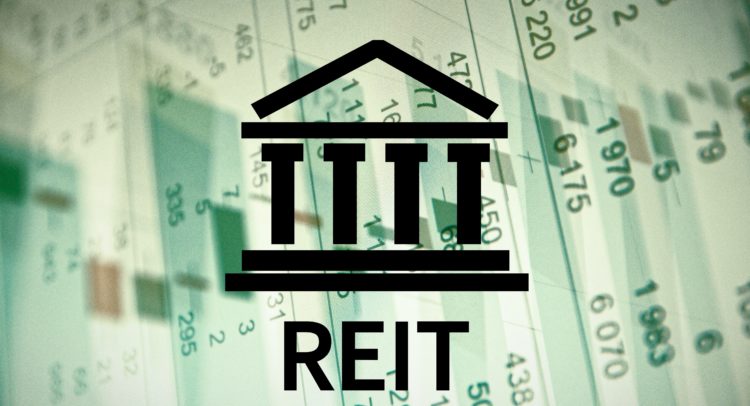Saul Centers (BFS) is a self-managed, self-administered Real Estate Investment Trust, specializing in the ownership, management, and development of neighborhood and community shopping centers, as well as mixed-use properties. As of its latest filings, the company operated 50 shopping centers and 10 mixed-use properties comprising 7.8 million and 1.9 million square feet of gross leasable area, respectively.
TipRanks Cyber Monday Sale
- Claim 60% off TipRanks Premium for data-backed insights and research tools you need to invest with confidence.
- Subscribe to TipRanks' Smart Investor Picks and see our data in action through our high-performing model portfolio - now also 60% off
I am neutral on the stock.
Saul Centers’ Operating Strategy
The company’s properties are primarily located in the Washington, D.C. and Baltimore metropolitan area, which accounts for 85% of Saul’s operating income. While the company’s diversification strategy includes the development of transit-oriented, residential mixed-use projects, these properties will also be located in the Washington, D.C. metropolitan area, where management’s expertise can likely yield the best results.
Over the past several years, shopping center properties have been one of the toughest real estate fields to operate in. The rise of ecommerce had already started hurting foot traffic years ago, while the pandemic further pressured mall owners during 2020-2021 amid the overall restrictions, lockdowns, and shifts in consumer behavior.
Despite that, Saul Centers has managed to produce resilient results. Rental revenues declined by just 1.5% in 2020 to $220 million, while in 2021, they reached a new all-time high of $234.5 million despite the underlying challenges during the past two years. This has been possible due to management’s thoughtful strategy, which maximizes the potential revenues to be sourced from its properties, as well as the overall qualities of the company’s property portfolio.
A core characteristic of management’s strategy incorporates the improvement of the operating performance of its assets through the addition of pad sites. Further, management is focused on augmenting its development pipeline with selective redevelopment and renovations of its core shopping centers.
In general, management has always been looking for that extra trait that will unlock value amongst its properties, and enhance its investment returns. Take the company’s 3,700 apartment units and 975,000 square feet of retail and office space that are currently under its development pipeline, for instance. All of these development sites are located adjacent to red line Metro stations in Montgomery County, Maryland. Thus, the company should enjoy increased operating and rent growth leverage in these properties once they come online.
In its shopping centers, the company’s strategy has included replacing underperforming tenants with others that have the potential to generate strong traffic, including anchor stores such as supermarkets and drug stores. In fact, 33 of Saul’s Shopping Centers are anchored by a grocery store and offer mainly day-to-day necessities and services. As a result, Saul’s shopping centers can attract foot traffic relatively easily, as shoppers visit for their everyday necessities. Simultaneously, this increases the chances that shoppers will spend money on the other stores inside the shopping center, resulting in strong tenant retention.
Speaking of tenant retention, Saul Centers’ property portfolio includes a diversified tenant base and high-quality tenants overall. Giant Food, a tenant at 11 of Saul’s shopping centers, for instance, individually comprised 5.2% of the company’s total revenue during Q1-2022. Further, no other tenant accounted for more than 2.5% of Saul’s total revenues, while most tenants include investment-grade companies, such as McDonald’s (MCD), Starbucks (SBUX), CVS Health (CVS), and other resilient businesses.
Latest Results
Saul Centers’ latest results illustrated the company’s strength against a rather uncertain trading environment, once again. For Q1 of fiscal 2022, revenues came in at $62.1 million, implying a 5.8% increase year-over-year. Specifically, same-property revenues rose by $3.4 million or 5.8%, while same-property operating income rose by $3.0 million or 7.1% compared to Q1-2021. Saul’s improving results were driven by lower credit losses on operating lease receivables, elevated capitalized interest, loftier base rent, and increased parking income.
Consequently, funds from operations came in at $27.0 million or $0.80 per diluted share, recording a notable improvement from last year’s $22.7 million and $0.71, respectively. Besides higher total revenues boosting this metric, funds from operations (FFOs) were also boosted by higher lease termination fees. Besides the company’s qualities, as mentioned earlier, contributing to the quality of the company’s rental revenues, they were also visible in Saul’s industry-leading occupancy rates.
Lately, shopping centers have struggled with tenant retention amid low foot traffic, causing some retailers to move out or relocate. With several Saul’s tenants offering essential services (e.g., pharmacies, grocery stores), the company’s commercial and residential portfolios were 92.5% and 96.8% leased, respectively, at the end of the quarter. This compares to 92.2% and 96.9% in the prior-year period, which even makes for a slight improvement in combined occupancy.
Wall Street’s Take
Turning to Wall Street, Saul Centers has a Hold consensus rating based on a single Hold assigned in the past three months. At $54.00, the average Saul Centers price target implies 13.9% upside potential.

Is The Stock Worth Buying?
Based on Saul Center’s Q1 results and overall leasing profile, I forecast the company will deliver FFO/share close to $3.20 for fiscal 2022. At the stock’s current price levels, this implies a P/FFO of around 15.5. While this may not suggest a discount, especially for a company whose growth prospects are somewhat limited while operating in a rather risky real-estate sub-sector, Saul’s overall qualities can likely support this multiple.
Additionally, the current annual dividend per share of $2.28 is rather well-covered and implies a substantial yield of 4.7%. The dividend is unlikely to grow rapidly, but there is enough room for modest hikes, similar to last year’s 3.6% increase. Thus, conservative income-oriented investors are likely to appreciate Saul Centers’ investment case.
Discover new investment ideas with data you can trust.
Read full Disclaimer & Disclosure
















